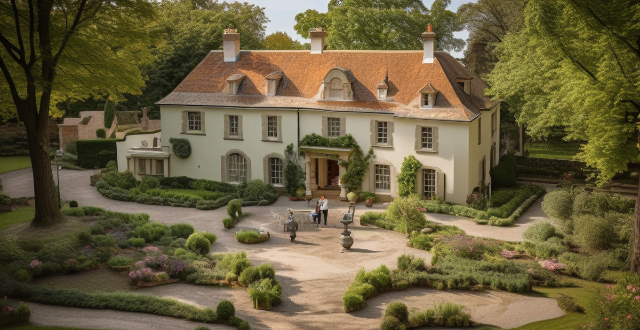Regional specialties like cuisine, handicrafts, music, dance, and architecture reflect the history and culture of tourist locations by providing insights into local traditions, materials used, symbolism in designs, historical connections, and architectural styles. These elements serve as living narratives that educate and entertain visitors, offering them a profound connection to the soul of the place.

How Do Regional Specialties Reflect the History and Culture of Their Respective Tourist Locations?
Regional specialties are an integral part of any tourist location, offering a unique glimpse into the history and culture of the place. These specialties can range from local cuisine, handicrafts, music, dance, and even architectural styles. Each of these elements carries with it the story of the region, reflecting its past and present, and shaping its future. Let's delve deeper into how these regional specialties mirror the history and culture of their respective tourist locations.
Cuisine: A Taste of History
*Ingredients and Cooking Methods*
The local cuisine offers a direct link to the history of a region. The ingredients used often reflect what was available locally or what was brought by traders, explorers, or immigrants. For instance, the extensive use of seafood in coastal regions points to their fishing heritage, while the spices in certain dishes can trace back to ancient trade routes.
*Dishes and Traditions*
Traditional dishes often have stories behind them, which might involve historical events, cultural practices, or mythological tales. Eating these dishes during festivals or special occasions keeps the history alive and passes it down through generations.
Handicrafts: Art Preserving Heritage
*Materials and Techniques*
The materials used in handicrafts often come from the local environment, such as bamboo in Asia or wool in certain European regions. The techniques employed in creating these crafts have been honed over centuries, with each generation adding its touch while preserving the original essence.
*Symbolism and Designs*
The designs and patterns found in handicrafts frequently carry cultural significance or symbolize historical events. For example, Native American pottery often features intricate designs that represent their creation myths or clan symbols.
Music and Dance: Rhythmic Chronicles
*Genres and Instruments*
The types of music and instruments prevalent in an area can indicate its historical connections and cultural influences. For instance, the bagpipes in Scotland have a long history tied to the country's warfare and social events.
*Performances and Celebrations*
Dances performed during specific festivals often reenact historical events or express cultural beliefs. They serve as living narratives that educate and entertain simultaneously.
Architecture: Stones Tell Stories
*Styles and Materials*
The architectural style of a region reflects its history, climate, and availability of resources. For example, adobe houses in desert climates show adaptation to the environment, while Gothic cathedrals in Europe symbolize the religious and artistic fervor of the Middle Ages.
*Monuments and Landmarks*
Historical landmarks like monuments, temples, or castles stand as testaments to past eras. Visiting these sites provides tangible links to the region's history and the people who shaped it.
In conclusion, regional specialties act as vivid chronicles of the history and culture of tourist locations. Through cuisine, handicrafts, music and dance, and architecture, they offer travelers not just a fleeting experience but a profound connection to the soul of the place. By engaging with these aspects, tourists gain a deeper understanding and appreciation for the destination's heritage.